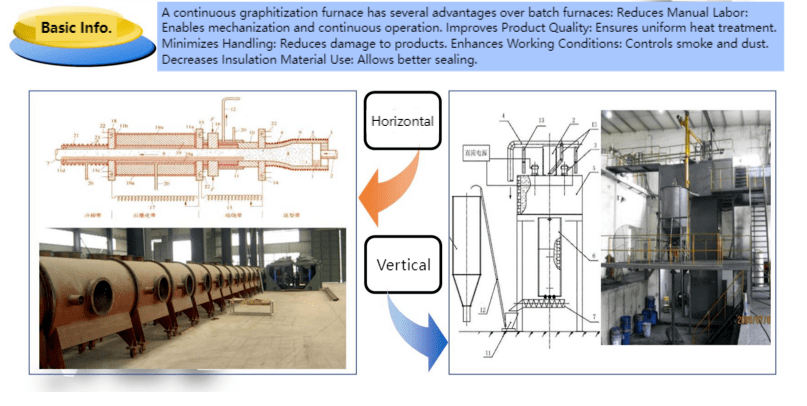【Graphitization】 Loading Methods

【Graphitization】 Loading Methods
There are four main loading methods in graphitization production:
1. Vertical Loading Method
Description: Carbon blocks are arranged in rows, standing vertically along the axis perpendicular to the bottom of the graphitization furnace.
Applications: Commonly used for medium and large-sized products due to its labor-saving and high-efficiency characteristics.
Limitations: The length of the products is restricted; if the product extends above the end walls, it affects the quality, and if it is lower than the conductive electrode, it reduces equipment capacity and increases energy consumption. Graphitized petroleum coke (gpc) can be prepared using a graphitization furnace. Specifications are available upon request.
2. Horizontal Loading Method
Description: Carbon blocks are placed horizontally on the base pad, perpendicular to the longitudinal direction of the furnace core.
Applications: Preferred for small-sized, short-length products, and plates. The horizontal series connection method is a special type of horizontal loading where baked electrodes awaiting graphitization are placed parallel to the longitudinal direction of the furnace core, connected horizontally, and clamped between the conductive electrodes at both end walls to form a long strip.
3. Mixed Loading Method
Description: A combination of vertical and horizontal loading methods.
Applications: Suitable for short-length baked products like nipple blanks and graphite block blanks. This method optimizes the use of furnace core space by mixing vertical and horizontal arrangements.

4. Staggered Loading Method
Description: Products of different sizes are arranged along the axial direction of the graphitization furnace in a staggered manner.
Applications: This method ensures uniform furnace resistance and prevents local temperature spikes in the furnace core. It reduces temperature differences and minimizes crack formation in the products.
Limitations: More complex and labor-intensive to operate compared to other methods.
Feel free to contact us for further guidance on graphitization technology. Our team is dedicated to providing you with in-depth insights and tailored assistance to meet your needs. Whether you have questions about product specifications, market trends, or pricing, we are here to help.
No related results found








0 Replies